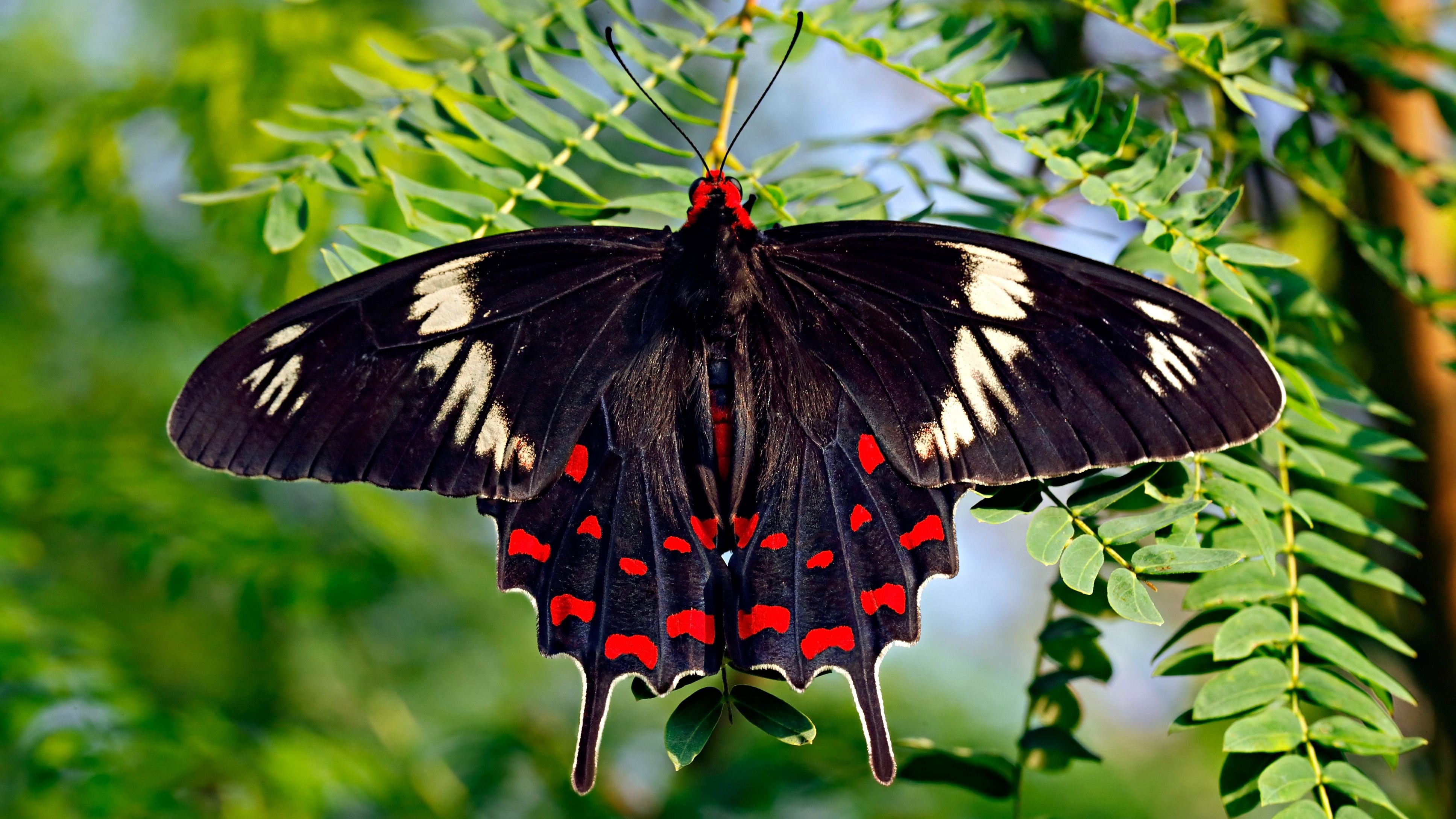
Credit: Special Arrangement
Kari Uttraani, Subbiah muttered. I was quizzing him about the Kannada name of the Indian snakeweed (Stachytarpheta jamaicensis) that grows readily all over Navilu Kaadu. It was a warm June day and the creature that had piqued my interest in this plant, flitted about nectaring among lavender Kari Uttarani blossoms — the exquisite Crimson Rose butterfly (Pachliopta hector).
I gaped at a clutch of them fluttering on wings dark as the velvety night sky with licks of red on the hindwings and white markings on the forewings. Subbiah continued to tackle the deeply rooted Lantana camara shrub.Ironically, the blooms of both the lantana and the Indian snakeweed — one, a prolific alien, another, native and benign — are favoured by Crimson Rose butterflies for nectaring. At Navilu Kaadu, we uproot the pesky invaders and let the natives thrive.
Earlier in March, I had spotted a larva of the butterfly. The plump inch-long caterpillar was as nattily attired as the parent, a shade of deep purple with funky red spikes called tubercles all over its dorsal side.
In nature, most poisonous creatures don vibrant hues in a defence mechanism known as aposematism. The striking garb serves a weighty purpose — a portent to potential predators, of the dreadful fate that awaits them should they harbour thoughts of making a meal of them. The larvae of Crimson Rose butterflies aren’t born laden with toxins. They gorge on various species of Aristolochia, commonly known as birthwort plants and stockpile aristolochic acids contained in these plants, rendering themselves unpalatable even in adulthood. Another butterfly, the female of the common Mormon (Papilio polytes) impersonates the Crimson Rose to mislead predators that they are as distasteful.
Crimson Rose butterflies breed year-round with their numbers spiking during the monsoon season. Fertilised females lay six to eight vermilion-tinted eggs on the ventral side of the leaves of the Indian birthwort or other Aristolochia plant species. Soon after hatching, the larva snacks on its eggshell and begins to fatten on the leaves of the host plant. As it gains girth and length, the caterpillar moults a bunch of times, crawling out of its old skin each time. The gluttonous little thing devours the shed skin too before returning to chomping on leaves. The intervals between moults are called instars. The Crimson Rose larva grows through five instars before turning into a dormant pupa, and finally emerges as a magnificent imago. Butterfly experts in India and Sri Lanka have been observing swarms of Crimson Rose butterflies fly to the sea and over the Gulf of Mannar from India’s southeastern coast to Mannar Islands off Sri Lanka’s northwestern coast, a migratory behaviour that is yet to be studied. These butterflies relish the nectar of diverse plants, pollinating them in return. Besides nectaring, butterflies also congregate on damp patches of soil and puddles, sucking up vital salts and amino acids, a behaviour known as mud-puddling. The male butterfly transfers these nutrients to the female as a nuptial gift during mating, enhancing the quality of eggs and bolstering their chances of survival. (Medley S R & Eisner, T, 1996)
Several species of Indian butterflies are protected under the Wildlife (Protection) Act (WPA), 1972. Some like the Crimson Rose butterfly enjoy Schedule I protection on par with the Royal Bengal tiger under WPA, 1972.
Regardless of their protected status, butterflies stand a slim chance of survival without native larval host plants for their young, and nectar-bearing plants and tree species with which they have coevolved. Monoculture farming practices, unbridled use of pesticides and herbicides, habitat loss from anthropogenic factors, and illegal trade have imperilled these lovely creatures.
Instead of focusing on exotic alien varieties, planting clusters of native flowering plants and tree species that support butterflies in urban gardens and local parks can preserve their habitats.
Rooting for Nature is a monthly column on an off-kilter urban family’s trysts with nature on a natural farm.
The author chipped away at a software marketing career before shifting gears to sustainable entrepreneurship and natural farming. She posts as @ramyacoushik. Reach her at bluejaydiaries@gmail.com